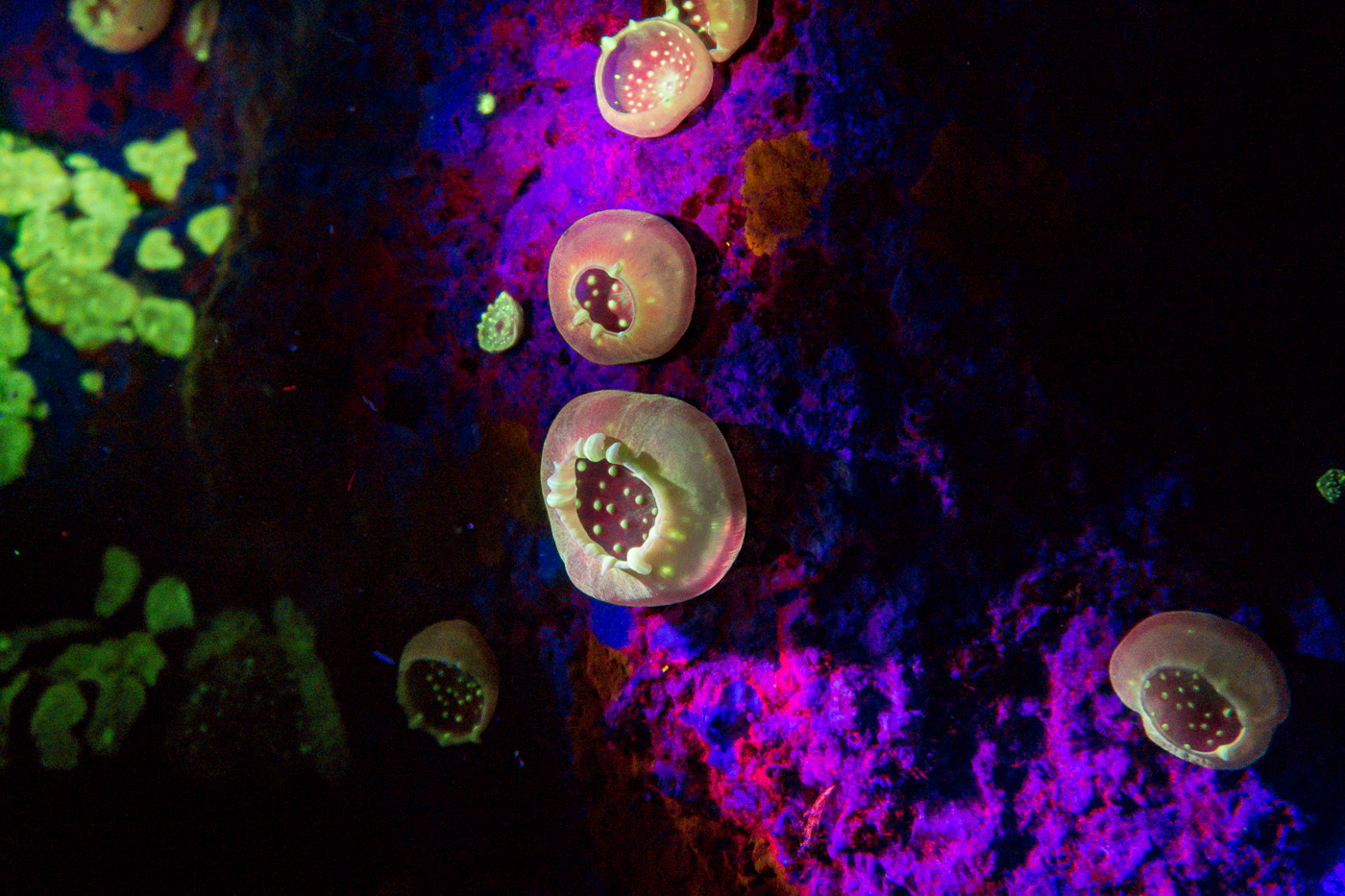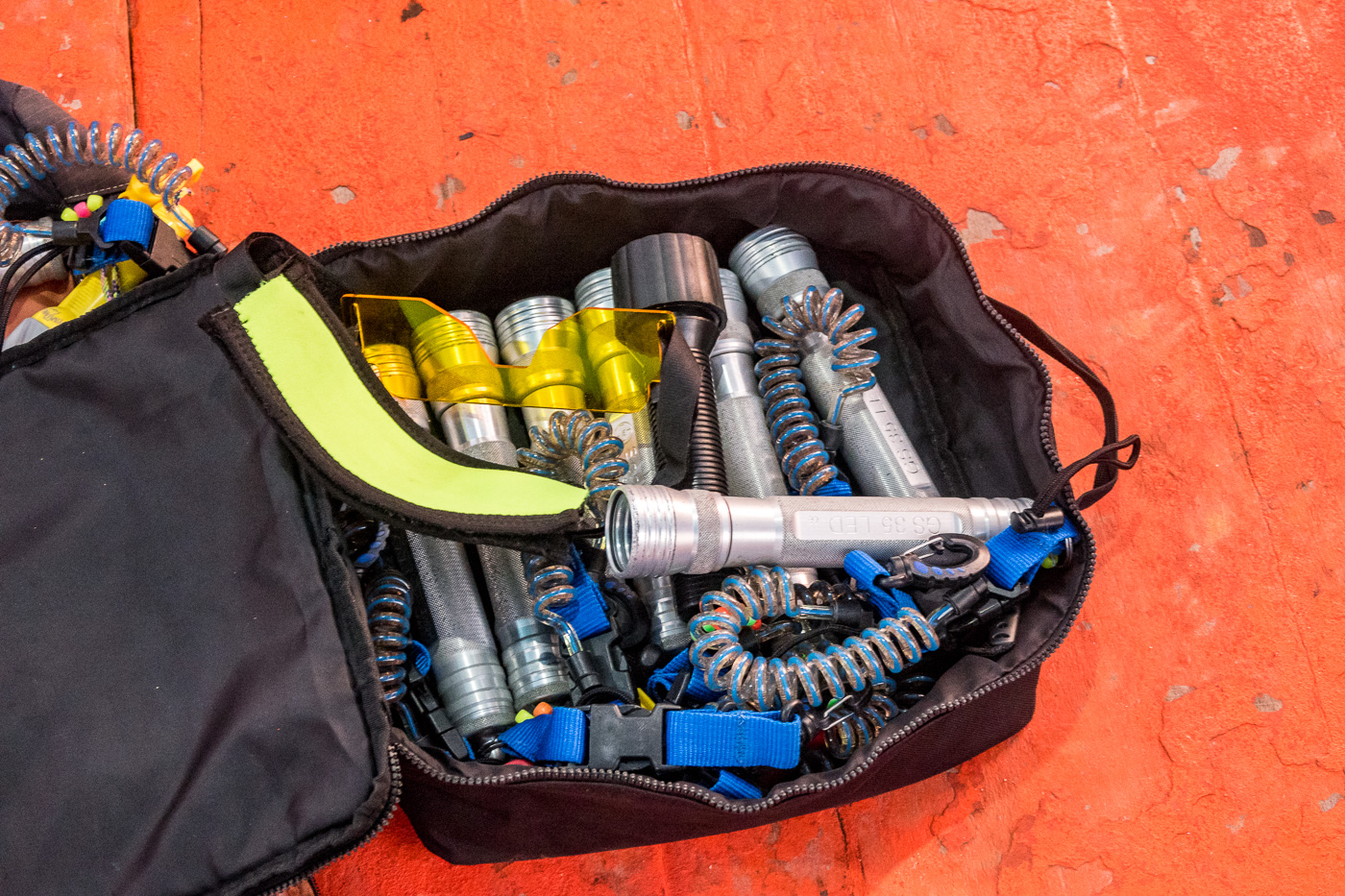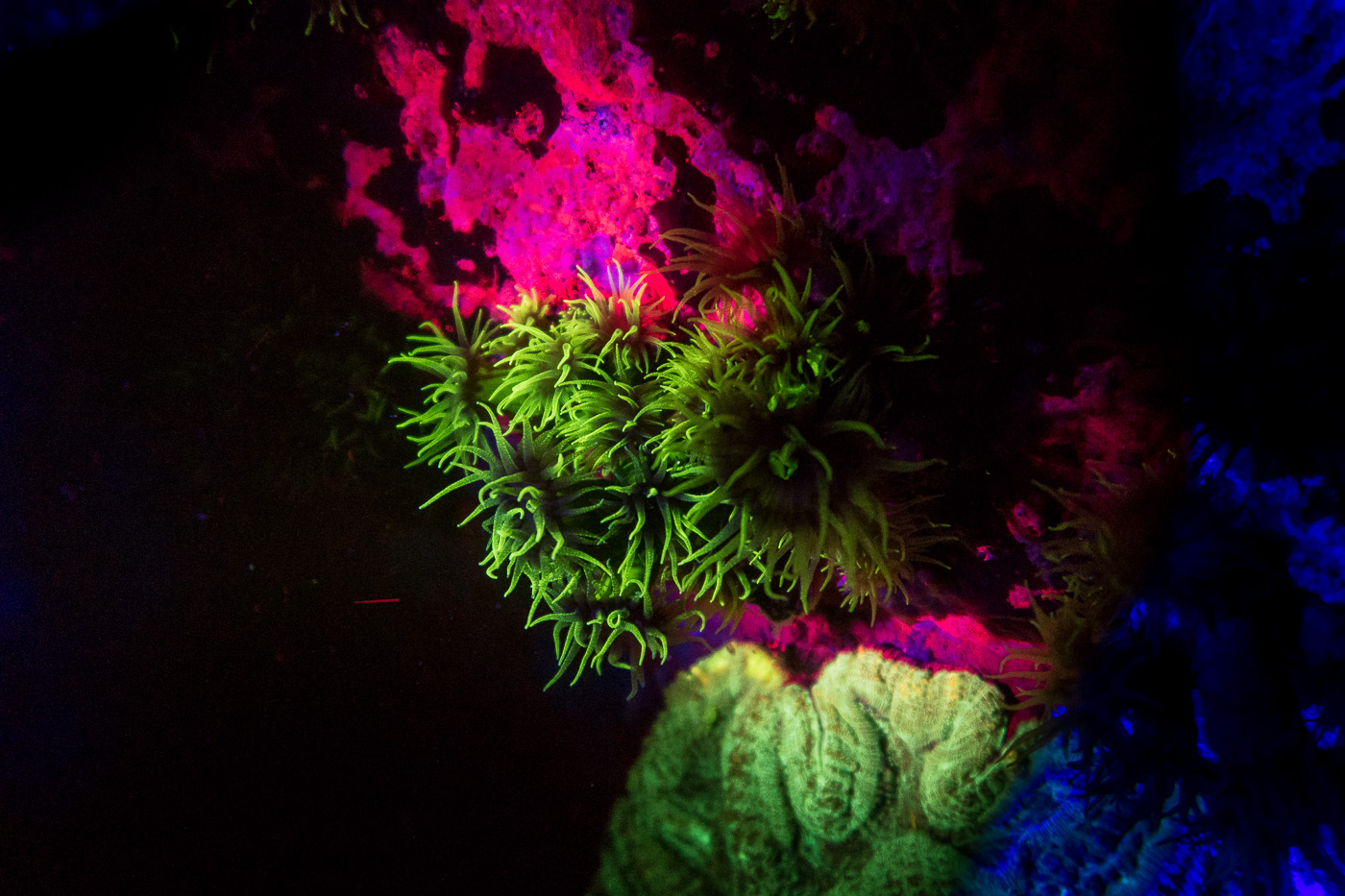We’ll let you in on Koh Tao’s best kept secret. If there is one dive you have to complete while you are there it isn’t Sail Rock (although, you obviously have to do that dive as well)…it is a UV night dive, or fluo dive. Our Koh Tao dive master was emphatic from the first day that we arrived that UV night diving was an out of this world experience, kind of like swimming through a living underwater canvas of exploding hot pinks, greens, purples and reds. The corals come alive in ways that you just don’t appreciate when you see them during the day. So do yourself a favor and end your diving adventures with a Koh Tao UV night dive at Twin Peaks or Japanese Gardens. We promise this unique experience will make you see the simpler corals and creatures of the sea in a whole different (florescent) light. It really did for us!
 What You’ll See on a Koh Tao UV Night Dive
What You’ll See on a Koh Tao UV Night Dive
Unlike at Sail Rock where you’re peering out into the big blue for whale sharks (and dolphins!) or at Chumphon Pinnacle swimming through walls of schooling trevallies, it isn’t the fish you’ll be seeking out on a UV night dive. In fact, most fish won’t even really appear under the blue light. Instead look to the everyday corals – the anemones, elephant ears, barrel sponges, and orange tube corals – that during a fluo dive.
Two dive sites off of Koh Tao in particular are great for UV night dives – Japanese Gardens and Twin Peaks. On our visit to Twin Peaks, Adam was able to rig a lens to the front of his underwater camera housing. Though this was not an easy feat, we ended up with a few cool photos to share.
Nudibranchs in the Gulf of Thailand have nothing on the Similan Islands or Ahmed, but how cool is this nudibranch our dive master Sam spotted? It is a phidiana indica nudibranch. You can’t tell from the photo but he is tiny, only 30 millimeters long. During the day this guy is yellows and reds but at night under the special UV lights and filters he glows a brilliant white. He didn’t take particularly well to the lights being shown on him so was moving surprisingly quickly for a nudibranch.
The anemones glow in tones of deep reds and purples while the leather corals become a brilliant green which contrasts dramatically against the pink rocks.
And of course you still have the chance of spotting some cool nocturnal fish just like you would on a regular night dive. We saw several small shy moray eels who glow a vivid yellow under the UV light (though they were quite elusive and slithered away quickly so we weren’t able to snap a good pic). Our most memorable fish spot was a swimming spotted marbled ray. And one of the other lucky divers on our boat got to swim briefly with a large sea turtle.
 How Does UV Night Diving Work?
How Does UV Night Diving Work?
UV night diving is also referred to as florescence diving, fluo diving or glow diving.
Corals and certain marine life contain protein pigments that happen to fluoresce under a certain wavelength of illumination. When you are UV night diving, you use two additional pieces of equipment – a UV flashlight which signs this specific wavelength of illumination and a lens filter for your mask. As you shine your UV light on anything containing these protein pigments, the fluorescence absorbs high energy light and emits it as low energy light. Through the mask lens, the colors appear brilliant shades of neon pink, green, purple, red and yellow.
Our dive shop New Way Diving also provided everyone with a small backup torch (for those just-in-case situations) as well as a neon-colored globe strapped to the tops of our tanks. Because visibility is almost zero at night down below, the glowing neon globes acted as beacons for us to help identify both our buddy as well as our dive master (who rocked a different color) quickly and easily in the dark.
 What to Expect from a UV Night Dive
What to Expect from a UV Night Dive
It is hard to describe the magic of UV night diving on florescent underwater corals and marine life during a night dive. Instead you have to see it with your own eyes.
You’ll stay shallow (we averaged about 12 meters throughout the dive) and go slow… like really slow. In fact at times you won’t even be moving at all, just hovering over a rocky outcrop or standing in front of a wall of corals examining every square inch of life with your torch. For this reason, UV night dives are a true test in buoyancy. The good news is due to the shallower depth and the fact that you won’t be expending much energy moving, your dive time is sure to be a lot longer (60 minutes or more).
Generally speaking, a UV night dive is really an experience all for yourself. It is much harder to signal your buddies and other dive mates when you find something cool. So if you see something, you just get to enjoy it to yourself and then rub it in once you get back on the boat!
Night dives can be a little disorienting, especially given that you aren’t using a regular torch. I easy became turned around and had to keep a close watch out for Adam’s green beacon as well as our dive guide’s red one just to reorient myself with the rest of our dive team.
 Why Isn’t UV Night Diving More Popular?
Why Isn’t UV Night Diving More Popular?
We have absolutely no idea. With the absurd number of dive shops on Koh Tao (roughly 70) very few offer UV night diving options. We went with the same dive shop, New Way Diving, as our previous Koh Tao dives to Sail Rock, Southwest Pinnacle and Chumphon Pinnacle. They organize UV night dives based on customer (and captain) interest so inquire at their office about when the next trip is going out.
 If You Go: Koh Tao UV Night Diving
If You Go: Koh Tao UV Night Diving
What: Explore a whole new underwater world in fluorescence. UV night diving, also known as glow diving or fluo diving, is awesome and you can do it right here in Koh Tao whether you are pursuing your Open Water or Advanced Open Water certification or just visiting for some fun dives.
Where: Koh Tao, one of three small islands located off the west coast of Thailand in the Gulf along with Koh Samui and Koh Phangan, is often hailed as the diving epicenter of Southeast Asia. It has earned its reputation for offering cheap diving certifications with a great beach bar and restaurant scene.
When: Koh Tao offers year round diving. However, there are better times of year to visit to see whale sharks (March & April) and for the best visibility (July, August & September). When it comes to UV night diving though, conditions matter way less as you’ll have your face glued to the coral walls anyway.
How: If coming from Bangkok, Koh Tao is easiest reached by bus to Chumphon and fast boat to Koh Tao. We organized a packaged ticket through Lomprayah for 1,100 Baht which departs Khao San Road at 6:00am and arrives to Koh Tao (if the seas aren’t angry) around 2:45pm. If coming from Krabi or Phuket, Koh Tao is easier reached from Surrathani through a similar service.
Cost: UV night dives are 2,000 Baht each due to the need for specialized equipment.
Disclaimer: Our UV night dive was provided by New Way Diving (+66 077 456 528, info@newwaydiving.com, www.newwaydiving.com). We were lucky enough to have Sam as our dive master for our time diving on Koh Tao and would highly recommend asking for her! As always no matter who is footing the bill, the opinions on Bold Travel remain our own!












